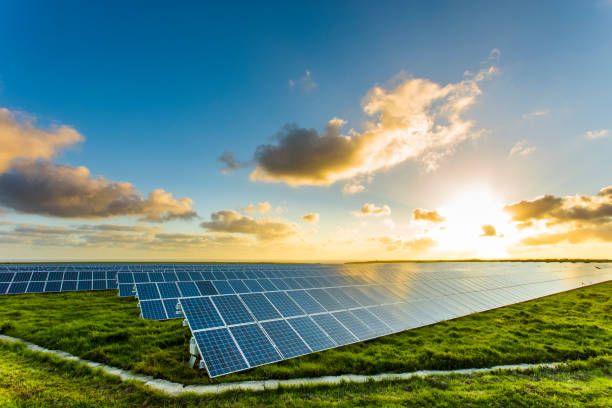
In this situation, the responsibility of construction companies and the construction industry toward the environment increases dramatically.
Enter BIPV or Building-Integrated Photovoltaics.
What are BIPV Systems?
Imagine tall buildings with the deep blue exterior built from Photovoltaics. Perhaps a home that has windows that generate solar energy! BIPV is a technique that converts these innovative concepts into real-world reality.
Building integrated Photovoltaics utilize PV modules as building components and integrate their design into the construction. This technology can transform façades, walls, roofs, wall canopies, corridors, and many other big and small areas into energy sources for generation.
You may be thinking, won’t it ruin the appearance of the structure? But No!
By incorporating thin-film panels, Bifacial cells, semi-transparent solar cell glazing, or conventional solar panels, BIPV designs give structures an innovative and modern look.
Why the Need for BIPV?
In the modern world, with a population just crossing 8 billion, Space has become a vital resource. Many people can’t access enough surface area to build huge-scale solar systems. This is why the need for modern and flexible solar energy solutions is enormous!
BIPVs address this issue by using the unutilized areas of buildings to install PV systems that can help grid generation and power the complete structure by itself.
BIPV in India
The advancement of BIPV technology in the country is in the beginning of its development. However, the potential to grow this industry is unlimited.
India is blessed with more than 300 sunshine days each year and can produce five quadrillion kWh annually. It is believed that the Indian government is currently adopting new policies and initiatives to increase solar use and encourage industry creativity. With land becoming ever scarcer, a technology such as BIPV could be a boon to make the most of the sun pouring down upon us.
The U-Solar CtrlS Data Center in Mumbai has India’s most extensive building-integrated photovoltaic (BIPV) installation. The 863kWp system covers 51,500 square. Feet. The façade area of the building and includes 2000 solar panels of high efficiency.
Cost-Effective
BIPV systems are affordable. In replacing the building material with Photovoltaics, you are reducing the total costs of building materials and mounting structures and labor required to install conventional PV systems.
Multifunctional System
Although traditional solar energy systems serve only one function of generating electric power, BIPVs are multifunctional. They can also serve as primary windows, roofs, and walls.
Reduces Energy Consumption
The systems come with translucent modules, allowing ample sunlight to shine throughout the daytime. In addition, they also help keep the interior cool, conserving energy and lighting expenses.
Better Space Utilization
Conventional solar energy systems can only be placed in specific zones in buildings. This typically reduces their effectiveness. There is no limitation in BIPVs, which can be integrated into various locations.
Aesthetically Pleasing
Solar panels are usually installed as a part of the building and then placed on elaborate structures that may interfere with the architecture of the building. Because BIPVs are designed to fit the design of the building, they do not have to compromise on the design aesthetics of the building.
More Sustainable
Utilizing a renewable energy source can help decarbonize buildings. Furthermore, removing building materials such as steel plates and mounting structures can help further reduce carbon emissions.
Ornate InRoof- A Futuristic Solar Roof
Ornate Solar has designed India’s first solar roof that integrates solar energy and eliminates the requirement for traditionally used sheet roofing. Its roofing is made out of solar panels, which act as the leading waterproof roofing of a building.
The system installed in just a few days is ideal for building new construction. Companies planning roofing repairs can easily change to a solar InRoof system and avoid roofing expenses.
